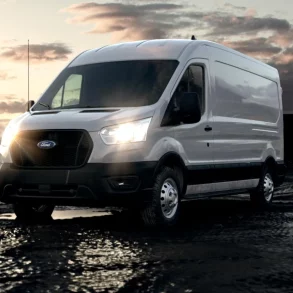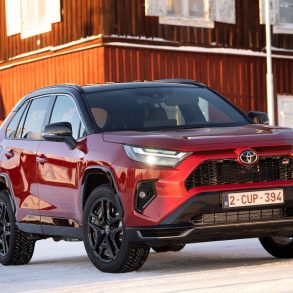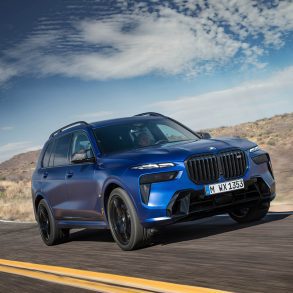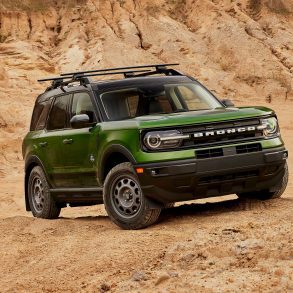Honda Ridgeline
The Honda Ridgeline is a mid-size pickup truck manufactured by Honda. It’s unique within the pickup truck market due to its unibody construction, car-like driving experience, and various innovative features. The Honda Ridgeline represents an interesting alternative in the pickup truck market, especially for those who prioritize daily driving comfort and innovation over heavy-duty capability. Its unibody construction and thoughtful design features set it apart from other trucks, making it a unique choice for a certain subset of buyers. While it may not suit the needs of traditional truck buyers, the Ridgeline has found success by offering something different in a highly competitive segment.
Honda Ridgeline Overview
The Honda Ridgeline is a mid-size pickup truck that has been in production since 2005. It is the only unibody pickup truck on the market, which means that it has a car-like ride and handling. The Ridgeline is available in front-wheel drive and all-wheel drive configurations. It is powered by a 3.5L V6 engine that produces 280 horsepower and 262 lb-ft of torque. It is mated to a nine-speed automatic transmission. The Ridgeline has a maximum fuel economy of 18 mpg in the city and 25 mpg on the highway. It is known for its comfortable ride, spacious interior, and family-friendly features. It is a good choice for people who are looking for a truck that can do it all.
The Ridgeline has faced both criticism and praise for its departure from traditional truck design. Critics argue it’s not as capable as conventional pickups, while supporters praise its comfort, handling, and unique features. It has received numerous awards, including the North American Truck of the Year in 2017.
Overall, the Honda Ridgeline is a good choice for people who are looking for a comfortable, spacious, and family-friendly truck. It is not as fuel-efficient or powerful as some other trucks, but it is still a good value for the price.
Honda Ridgeline Sales Figures
The Ridgeline’s sales have been modest compared to segment leaders but consistent with Honda’s positioning of the truck as a niche offering.
Honda Ridgeline U.S Sales Data & Charts
US Monthly Sales
| Year | Jan | Feb | Mar | Apr | May | Jun | Jul | Aug | Sep | Oct | Nov | Dec |
|---|---|---|---|---|---|---|---|---|---|---|---|---|
| No data available in table | ||||||||||||
| ∑ = | ∑ = | ∑ = | ∑ = | ∑ = | ∑ = | ∑ = | ∑ = | ∑ = | ∑ = | ∑ = | ∑ = | |
US Annual Sales
US Annual Growth
Honda Ridgeline Canada Sales Data & Charts
Canada Annual Sales
Canada Annual Growth
Honda Ridgeline Generations
First Generation (2006-2014)
The first generation Ridgeline was introduced in 2005. It was available in front-wheel drive and all-wheel drive configurations. It was powered by a 3.5L V6 engine that produced 247 horsepower and 245 lb-ft of torque. It was mated to a five-speed automatic transmission. Unlike traditional body-on-frame trucks, the Ridgeline featured unibody construction, providing a smoother, more car-like ride. All-wheel drive was standard, utilizing Honda’s VTM-4 system. The model was notable for its in-bed trunk, a lockable compartment beneath the pickup bed, and a dual-action tailgate that could open down or to the side. Overall, it was designed more for lifestyle buyers rather than heavy-duty users, with moderate towing and payload capacities.
Second Generation (2014-2020)
The second generation Ridgeline was introduced in 2014. It featured a more modern design and a more powerful engine. It is powered by a 3.5L V6 engine that produces 280 horsepower and 262 lb-ft of torque. It is mated to a nine-speed automatic transmission. Continued with a 3.5-liter V6, now paired with a 6-speed automatic transmission. Honda offered both front-wheel drive and all-wheel drive options. Improved interior quality, with available features like an 8-inch touchscreen, Apple CarPlay, Android Auto, and various driver assistance technologies. Maintained its innovative features like the in-bed trunk and dual-action tailgate, with added capabilities like an in-bed audio system.
Third Generation (2021-Present)
A 2021 refresh brought a more rugged appearance to the front end, aimed at addressing some criticism about the Ridgeline’s relatively mild styling. The new Ridgeline was mostly focused on style, bringing a new hood, a new dual exhaust, new fenders and a completely new face. The front bumper cover was redesigned with added functional slick air curtains. The grille was the most considerable change the Ridgeline saw, increasing in size and becoming bolder. Honda also introduced the Honda performance development appearance package (so called HPD) that came with a unique grille, black fender flares and bronze alloy wheels. Overall, the Honda’s only pick-up got a tougher truck-like design. Inside the new Ridgeline we could notice the upgraded infotainment system, with updated new graphics, quicker reactions and also a physical knob. The materials used were the same good quality as on the previous 2020 model, however, the new one came with new contrast-color stitching standard on all trim levels. The users could choose between the standard front wheel drive and the iVTM four-wheel-drive system, the 280 hp being sent to the wheels through the standard 9-speed automatic transmission. The 280 hp were developed by the standard 3.5-liter direct-injected VTEC V6 engine.










2019 back up camera broken. Obvious design flaw as wires are chafed and bare at pivot point. Honda seems to be unresponsive and dealer indicates repair to be around $1000. Hopefully and recall will prevail.